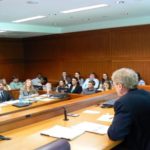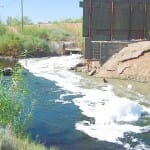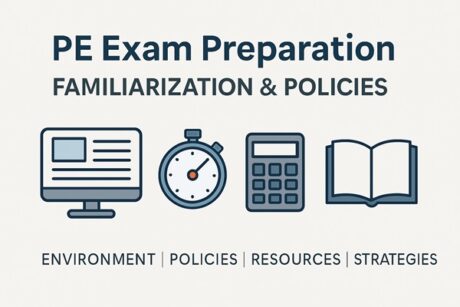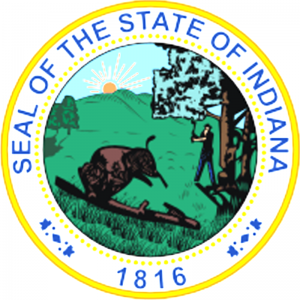- Webinar No: WBNR 1165
- PDH Units: 2
No data found for Custom Course Number
No data found for Custom Course Units
Intended Audience: All Engineers
Credits: 2 PDH Units
When: Wednesday 6/4. 2 - 4 pm ET
We promise you a very special webinar . This is not your boring ethics webinar. We are very proud to bring this webinar to you. The space shuttle Challenger, with seven crew members, broke up in the sky 73 seconds after its launch on January 28, 1986. All crew members perished. The cause of the failure was one of the O-rings sealing a joint in one of the rocket boosters; due to freezing temperature, it was not flexible enough to seal the joint and let the propellants exit the rocket booster. The resulting flame melted the nearby External Tank containing hydrogen and oxygen tanks. The External Tank exploded and caused the disintegration of the space shuttle Challenger. NASA could have prevented a tragic catastrophe if NASA officials and managers in Morton Thiokol - the manufacturer of the rocket boosters - had not overruled the objections from engineers in charge of the O-rings that the space shuttle should not be launched in the freezing temperatures. They insisted the O-rings would lose their flexibility in freezing temperatures and could not seal the joints. Tragically, they were right. The webinar, after a summary of the structure of the space shuttle, presents the engineering aspects of what caused the explosion and disintegration of the space shuttle Challenger. Then, Dr. Astaneh will focus on the behavior of managers and engineers directly involved in the design and manufacturing of the O-rings and the events leading to the approval of the launch in freezing temperatures. The first canon of the Code of Ethics for Engineers states that Engineers, in the fulfillment of their professional duties, shall Hold paramount the safety, health, and welfare of the public. In this tragedy, not only did the managers involved in the launch grossly violate the first canon, but by putting unbearable pressure on the engineers working for them, forced them to go along with the scheduled launch even though some, like Roger Boisjoly, were strongly against the launch during freezing temperatures. The webinar discusses how engineers and managers can work together to make safety paramount at every step of the project. Then the webinar discusses the tools that are available to engineers, including whistleblowing, to prevent safety-related disasters. Dr. Astaneh will use the tragic explosion of the Shuttle Challenger during the launch to show how not holding safety paramount by engineers and their managers resulted in the avoidable tragic failure and loss of lives of astronauts. Please note: this “Live & Interactive” ethics webinar is intended to fulfill the annual ethics course requirements for most professional certifications and registrations. References and Recommended Further Readings:
- Code of Ethics of National Society of Professional Engineers (NSPE) https://www.nspe.org/sites/default/files/resources/pdfs/Ethics/CodeofEthics/NSPECodeofEthicsforEngineers.pdf
- NSPE Ethics Guide, https://www.nspe.org/sites/default/files/resources/pdfs/Ethics/EthicsReferenceGuide.pdf
- ASME “Code of Ethics of Engineers”, https://www.asme.org/wwwasmeorg/media/resourcefiles/aboutasme/get involved/advocacy/policy-publications/p-15-7-ethics.pdf
- ASCE Code of ethics https://www.asce.org/-/media/asce-images-and-files/career-and-growth/ethics/documents/asce-code-ethics.pdf
- Ethics, Technology, and Engineering, a 2011 book by Ibo van de Poel and Lambèr Royakkers, Wily-Blackwell.
- Concepts and Cases-Engineering Ethics, a 2019 book by Charles E. Harris et al., published by Cengage.
- The Ethical Executive, a 2010 book by, Stanford Business Books.
- Truth, Lies, and O-Rings: Inside the Space Shuttle Challenger Disaster, by Allan J. McDonald, A.J., and James R. Hansen, University Press of Florida.
- Space Shuttle Case Studies: Challenger and Columbia, by Scott L. Post, (2014) 121st ASEE Annual Conference &Exposition, Indianapolis, IN. https://commons.erau.edu/cgi/viewcontent.cgi?article=2952&context=publication
- Report of the Presidential Commission on the Space Shuttle Challenger Accident (1986). Available at http://science.ksc.nasa.gov/shuttle/missions/51-l/docs/rogers-commission/table-of-contents.html or http://history.nasa.gov/rogersrep/51lcover.htm
- Report of the Advisory Committee On the Future of the U.S. Space Program. December 1990. https://history.nasa.gov/augustine/racfup1.htm
- Investigation of the Challenger Accident, REPORT OF THE COMMITTEE ON SCIENCE AND TECHNOLOGY, HOUSE OF REPRESENTATIVES, NINETY-NINTH CONGRESS, SECOND SESSION, 1986. https://www.govinfo.gov/content/pkg/GPO-CRPT-99hrpt1016/pdf/GPO-CRPT-99hrpt1016.pdf
Date: Wednesday. June 4. 2025.
Starts: 2 - 4 pm ET
Credits: 2 PDH Units
Learning Objectives:
At the successful conclusion of this webinar, you will learn the following knowledge and skills:- Why is the "holding safety, health, and well-being" of the public crucial in preventing disasters?
- How not holding "safety paramount" was the leading cause of the tragic explosion of the Shuttle Challenger during its lunch.
- How engineers can convince managers to also “hold safety paramount.”
- NASA could have prevented the space shuttle Challenger disaster if the managers had considered "safety" paramount.
- How “group think” can blind engineers to “hold safety paramount.”
- How whistleblowing can prevent engineering disasters.
Special Webinar Instructions
After payment, please visit this webinar page, click "Start Course" and fill out the Webinar Registration Form. You'll receive email notification and details on how to join the webinar. You will then be able to access the webinar slides, test your system and receive webinar reminders. After completing the webinar requirements, your certificate of completion will be saved and available for download in your profile. We value your feedback! Please rate this webinar after completion.Group Discounts Available
Bio:
Dr. Abolhassan Astaneh is a professor emeritus of civil and environmental engineering at the University of California, Berkeley, and a 2013 Minner Faculty Fellow in Engineering Ethics and Social/Professional Responsibility in the College of Engineering. He is the winner of the 1998 T.R. Higgins Lectureship Award of the American Institute of Steel Construction, the most prestigious award in his field. He is a licensed civil engineering Professional Engineer (P.E.) in California. Dr. Astaneh is currently a structural engineering and bridge engineering consultant, an expert witness in several court cases, continues his research and publication and gives lectures and seminars in structural engineering, earthquake engineering, and engineering ethics. He has published more than 300 journal papers, conference proceedings papers, technical reports, book chapters and has had hundreds of press interviews on technical aspects of subjects in his areas of interest. His research and expertise are in structural analysis, design, earthquake engineering of steel, steel-concrete, concrete and wood buildings and bridges, failure analysis of buildings, bridges and other structures, blast protection of structures, and protection of buildings, bridges, and other structures against terrorist attacks. He has designed, constructed, and done extensive research and studies of buildings and bridges for 52 years, including buildings of up to 73 stories and long-span bridges such as the Golden Gate Bridge and the Bay Bridge. Dr. Astaneh has performed the failure analysis of several collapsed structures, including the World Trade Center Towers and the Florida Pedestrian Bridge. Both cases involved engineers not abiding by the first canon of engineering ethics that is: engineers should hold safety paramount.Course Reviews
4.6
- 5 stars6
- 4 stars1
- 3 stars1
- 2 stars0
- 1 stars0
Once completed, your order and certificate of completion will be available in your profile when you’re logged in to the site.











The presenter made very clear where the mistakes were made in the Shuttle program, leading to the tragic decision to launch the Challenger on that freezing morning of Jan 28, 1986. The content of this webinar was such that even non-engineers could understand and benefit from the lessons of this presentation. This case of the Challenger disaster cannot be examined enough, and the lessons should never be forgotten.
I learned about the Challenger shuttle disaster 20 years ago while earning my BS degree in Civil Engineering. This course touched on all the topics I remember, covering the issues from every angle for a full in-depth understanding all the things that went wrong leading up to the explosion. I highly recommend this course and subject matter for every engineer.
Interesting Material
Great course with lots of information
This course was very interesting
This was an excellent webinar and well presented by Dr. Astaneh. Highly recommend this webinar
Course was very interesting and informative.
Very well done.